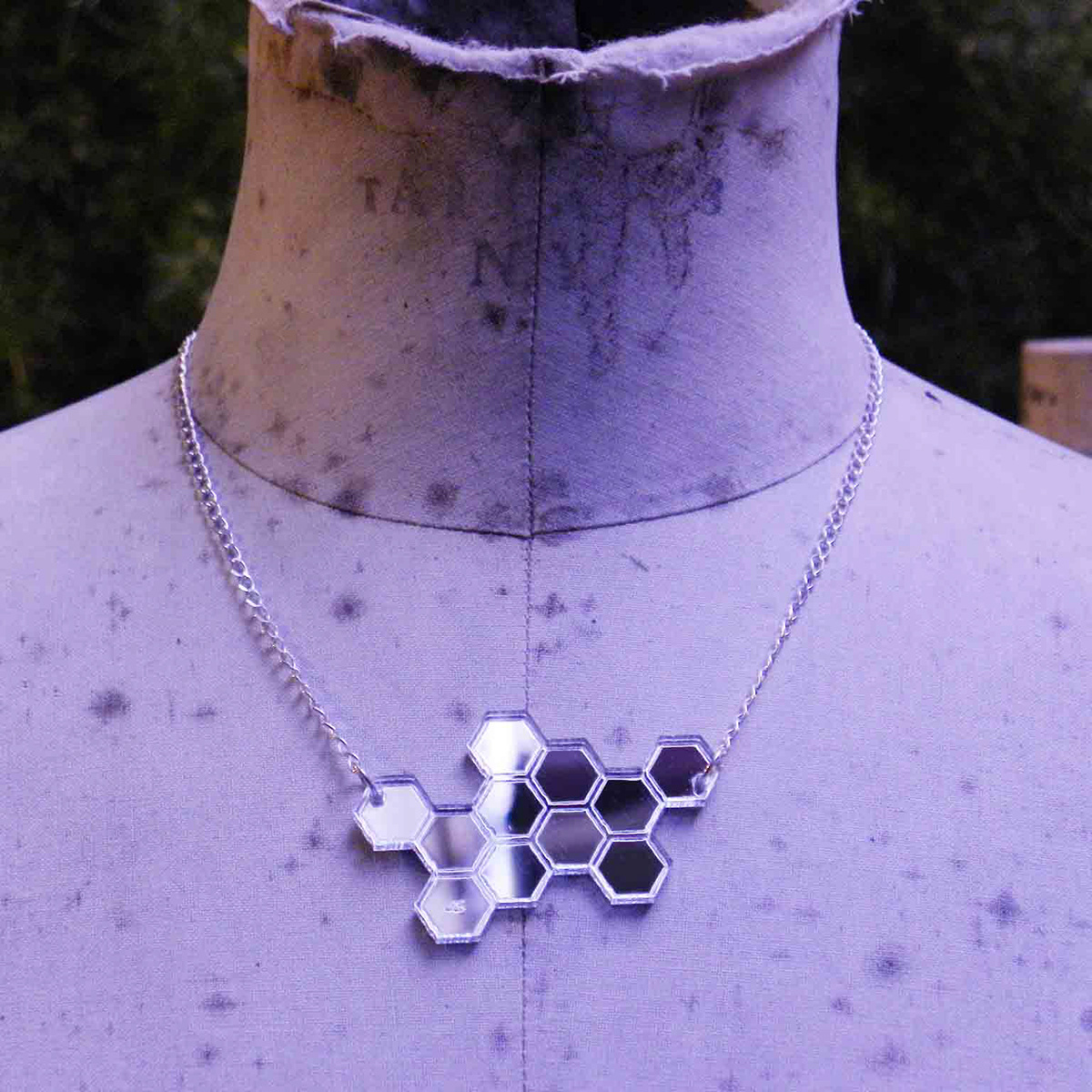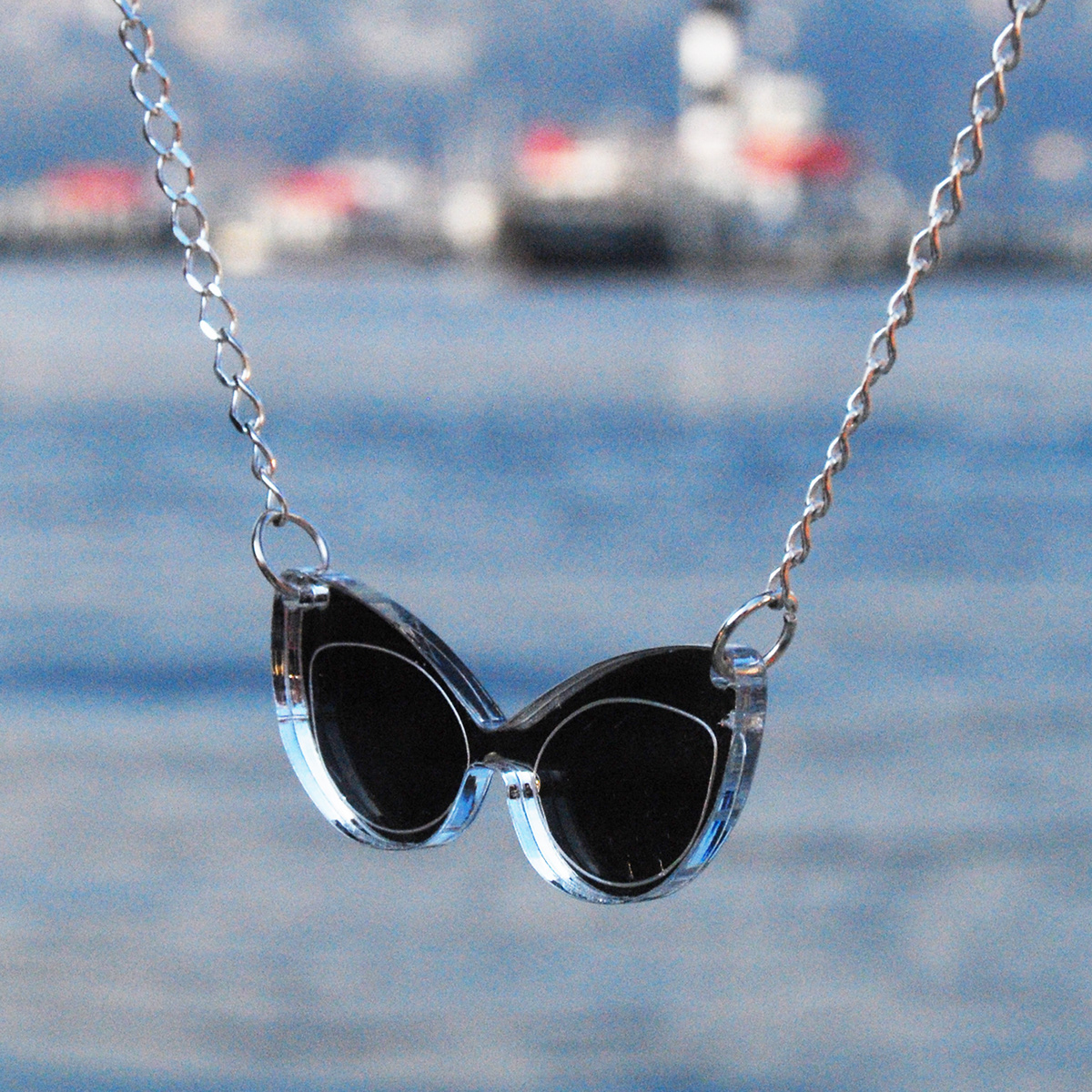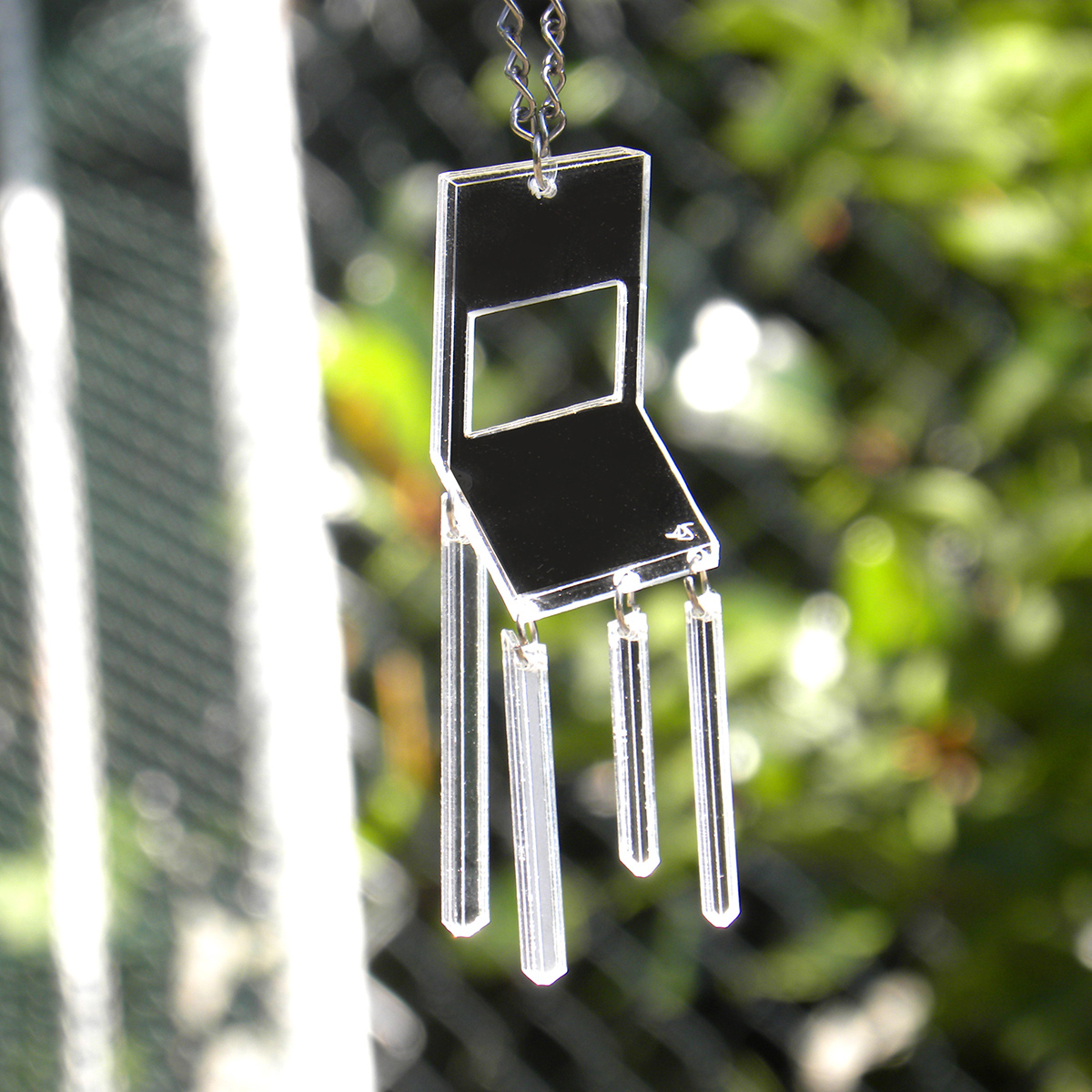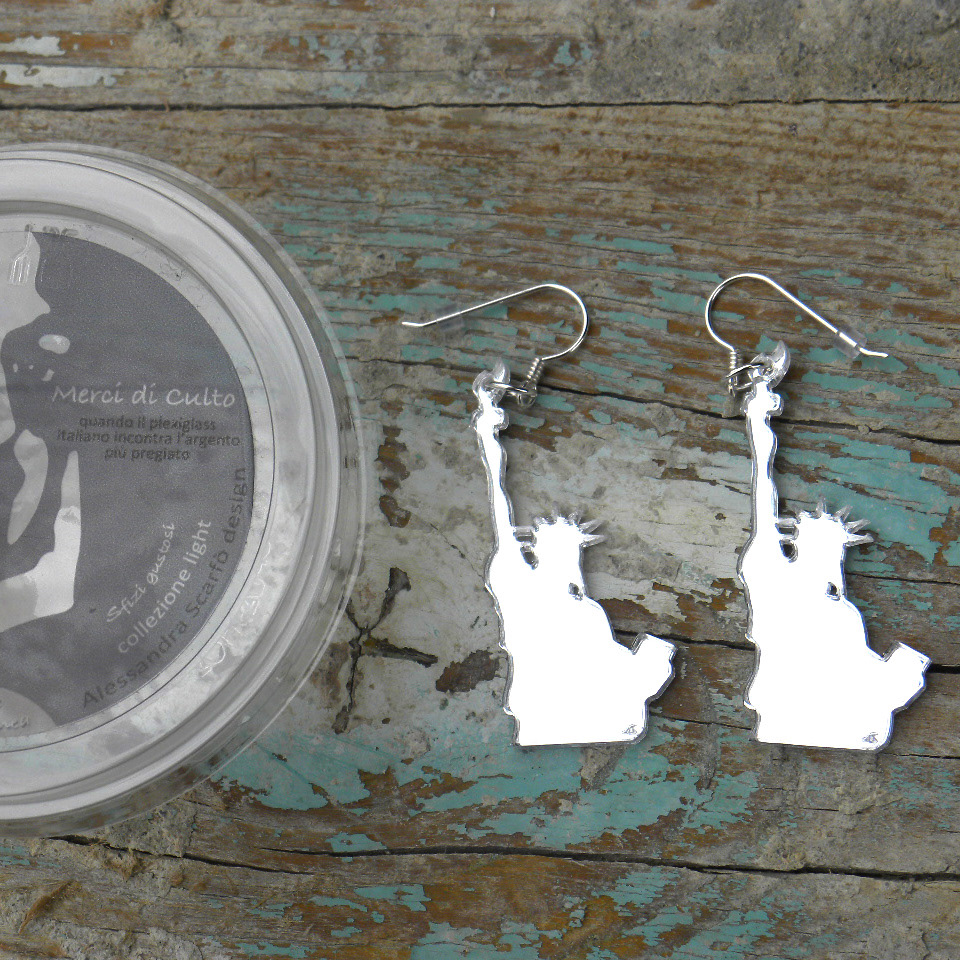Merci di Culto
Orecchini, Collane in argento e plexiglass di Alessandra Scarfò
Orecchini, Collane in argento e plexiglass di Alessandra Scarfò

Alessandra Scarfò, giovane designer, operante nello scenario internazionale contemporaneo, ha al suo attivo progetti che spaziano dal prodotto agli interni, dagli allestimenti fieristici alle installazioni d’arte interattiva. Le sue differenti competenze per ogni area sono l’espressione di un approccio di studio interdisciplinare, focalizzato sulla qualità ambientale, partendo dai modelli del design contemporaneo.
Nella ricerca sul design, grande attenzione è attribuita allo studio di nuovi materiali per lo sviluppo di soluzioni personalizzate e alla qualità dei dettagli. Recentemente, ha presentato la collezione Merci di culto, costituita da oggetti autoprodotti. La collezione ha sostenuto l’AIRC, nell’evento benefico Love Design, al PAC di Milano, insieme ai più grandi esponenti del design (Kartel, Alessi, Sambonet, Davide Groppi) tra l’11-13 novembre 2011. E’ stata selezionata ed esposta alla fiera di Cremona nella sezione YEP (Young Designer Exhibition 2011) dal 18 al 20 novembre 2011.

Le diverse forme elaborate vengono applicate a orecchini e collane (plexiglass e argento 925), specchi e orologi da parete (plexiglass). Il filo conduttore della sua collezione è stato un omaggio al design e alla sua storia, richiamando alla memoria ciò che Carmagnola e Ferraresi hanno definito “merci di culto”. In questo regno la merce è molto più che se stessa; in essa convergono un’infinità di interessi e suggestioni collettive, ricche di valenze evocative.
I soggetti individuati appartengono principalmente alla sfera dei prodotti d’uso, soprattutto quelli che hanno determinato la cultura e lo stile di vita italiana dal dopoguerra a oggi. Si pensi ad esempio alla Caffettiera e tazzina da caffè che rimandano alla ritualità della pausa o della convivialità, all’auto Cinquecento, che racchiude in sé il mondo dell’autonomia sulle quattro ruote, ai prodotti di design storico, come la sedia Thonet, che hanno rivoluzionato la progettazione, rapportando funzionalità e immagine stessa dell’opera, carica di emozioni e sensazioni nuove.

Altri soggetti sono il risultato di un’area semantica propria che svela il proprio schema ideativo, alimentato da un personale gesto artistico comunicativo. La collezione è insieme luogo d’incontro, di evocazione e narrazione in divenire, grazie anche alla scelta del materiale specchiante, tanto leggero e prezioso, da sembrare, nel caso degli orecchini o delle collane, parte integrante del corpo di chi li indossa. Il packaging, costituito da una scatolina in plastica, anch’essa leggera e trasparente, aggiunge al prodotto l’immagine di autenticità e modernità. La stessa, già in commercio, appartiene al settore alimentare (usata per mousse di prosciutto) è un invito al riutilizzo e al riciclo anche ai fini del risparmio e dell’ecologia. Da sottolineare la caratteristica del plexiglas specchiante che è visibile, pur non essendo cercato e guardato, grazie ai riflessi di luce e di forme rubate qui e là. Ciò costituisce il suo valore concreto nella sfera del sensibile, cui si aggiungono i rimandi culturali dei soggetti scelti, diventati “cult”, essendo rappresentativi di miti e chiave interpretativa del nostro passato, perché portatori di simboli e valori. Dunque, se la chiarezza e trasparenza identificano gli oggetti , la memoria storica e l’identità ne consacrano il legame tra passato e presente.

Alexandra Scarfò is a young designer on the international contemporary scene, with projects at the credit ranging from products to interior design, exhibitions and interactive art installations. Her interdisciplinary approach, focused on environmental sustainability and contemporary design models, gets expressed in her different skills for each areas.
In the design research area, she is studying new materials with great attention, for customized solutions and quality details’ development.
Recently, she presented the collection “Merci di culto”, consisting of self-produced items, available in several shops in Turin, Rivoli(Turin), Ivrea (Turin), Como, Rome, Florence, Antwerp (Belgium) and in the museum stores of the Turin Antonelliana Mole, the Turin Egyptian Museum, the Turin Car Museum, Milan’s Triennale and the Venice Guggenheim Fondation Musem. The collection has supported the AIRC (Italian Association for Cancer Research ) at their “Love Design 2011″ charity event at the PAC (Pavilion of Contemporary Art) in Milan, alongside the biggest names in Italian Design (Kartel, Alessi, Sambonet Davide Groppi, etc..).
In the design research area, she is studying new materials with great attention, for customized solutions and quality details’ development.
Recently, she presented the collection “Merci di culto”, consisting of self-produced items, available in several shops in Turin, Rivoli(Turin), Ivrea (Turin), Como, Rome, Florence, Antwerp (Belgium) and in the museum stores of the Turin Antonelliana Mole, the Turin Egyptian Museum, the Turin Car Museum, Milan’s Triennale and the Venice Guggenheim Fondation Musem. The collection has supported the AIRC (Italian Association for Cancer Research ) at their “Love Design 2011″ charity event at the PAC (Pavilion of Contemporary Art) in Milan, alongside the biggest names in Italian Design (Kartel, Alessi, Sambonet Davide Groppi, etc..).

The collection was also selected and exhibited at the 2011 YEP Cremona fair (Young Designers Exhibition 2011). The diverse developed forms are applied to earrings and necklaces ( laser-cut plexiglass and silver 925), mirrors and clocks (Plexiglas).
The underlying theme of his collection was a tribute to the design and its history, recalling that Carmagnola and Ferrara have called “merci di culto”.It refers to what Carmagnola and Ferraresi define as “Merci di Culto”: In this reality, goods are much more than they seem: they reflect a multitude of interests and collective suggestions. The subjects identified mostly belong to the sphere of utility products, especially those that have determined the culture and the Italian lifestyle since the war. Examples are the “Coffee and espresso cup” that refers to conviviality rituals, the car “Fiat 500,” that encloses the world of autonomy on four wheels. It also recalls other historical design products, such as the chair “Thonet”, that revolutionized the design by taking back the functionality to the proper representation of the product, bringing new emotions and feelings. Other subjects are coming from her personal semantic sphere that reveals its own conceptual framework, powered by a personal artistic research.
The underlying theme of his collection was a tribute to the design and its history, recalling that Carmagnola and Ferrara have called “merci di culto”.It refers to what Carmagnola and Ferraresi define as “Merci di Culto”: In this reality, goods are much more than they seem: they reflect a multitude of interests and collective suggestions. The subjects identified mostly belong to the sphere of utility products, especially those that have determined the culture and the Italian lifestyle since the war. Examples are the “Coffee and espresso cup” that refers to conviviality rituals, the car “Fiat 500,” that encloses the world of autonomy on four wheels. It also recalls other historical design products, such as the chair “Thonet”, that revolutionized the design by taking back the functionality to the proper representation of the product, bringing new emotions and feelings. Other subjects are coming from her personal semantic sphere that reveals its own conceptual framework, powered by a personal artistic research.

The collection represents both an evocation and a narration of the future, with the mirror material, so light and precious, that seems an integral part of the body. The plastic box packaging, also light and transparent, adds to the product an image of authenticity and modernity. That box, already on the market belongs to food industry and usually contains the ham mousse. It is then an invitation to re-use and recycle in the purpose of savings and ecology. The perceptible characteristic of the mirrored Plexiglas is to be underlined, even though not in purpose, through the light and stolen forms reflections here and there. This represents its true value in the sphere of the emotions, added to the cultural references of the chosen “cult” subjects. These subjects are myths representative and interpretative keys of our past, because carriers of symbols and values. So, if brightness and transparency identify the objects, the historical memory and our identity consecrate the link between past and present.
www.alessandrascarfodesign.com
words by Grazia Berardinelli
www.alessandrascarfodesign.com
words by Grazia Berardinelli
trad. Emilie Roberts



for info, order and custom collection:
www.alessandrascarfodesign.com
info@alessandrascarfodesign.com
+39 3402216101

